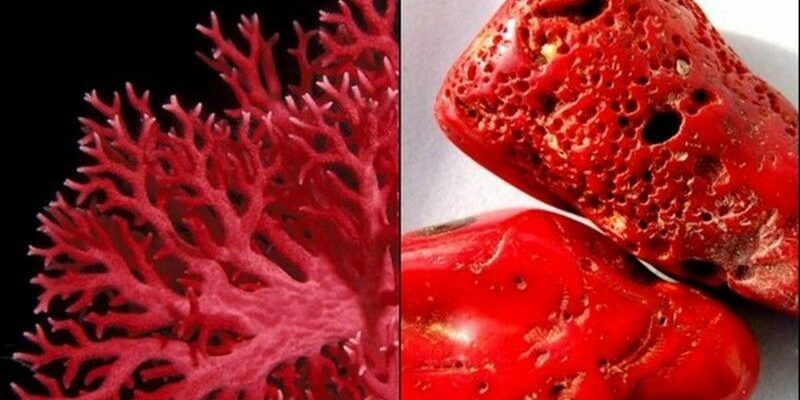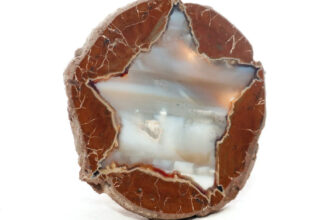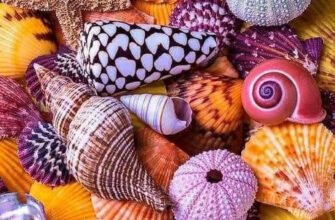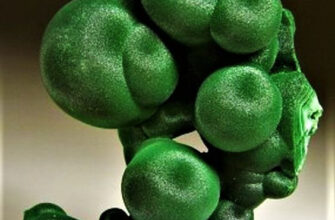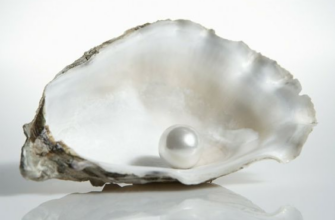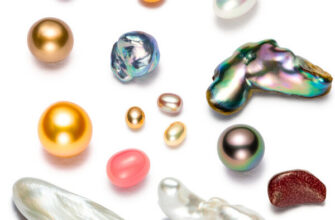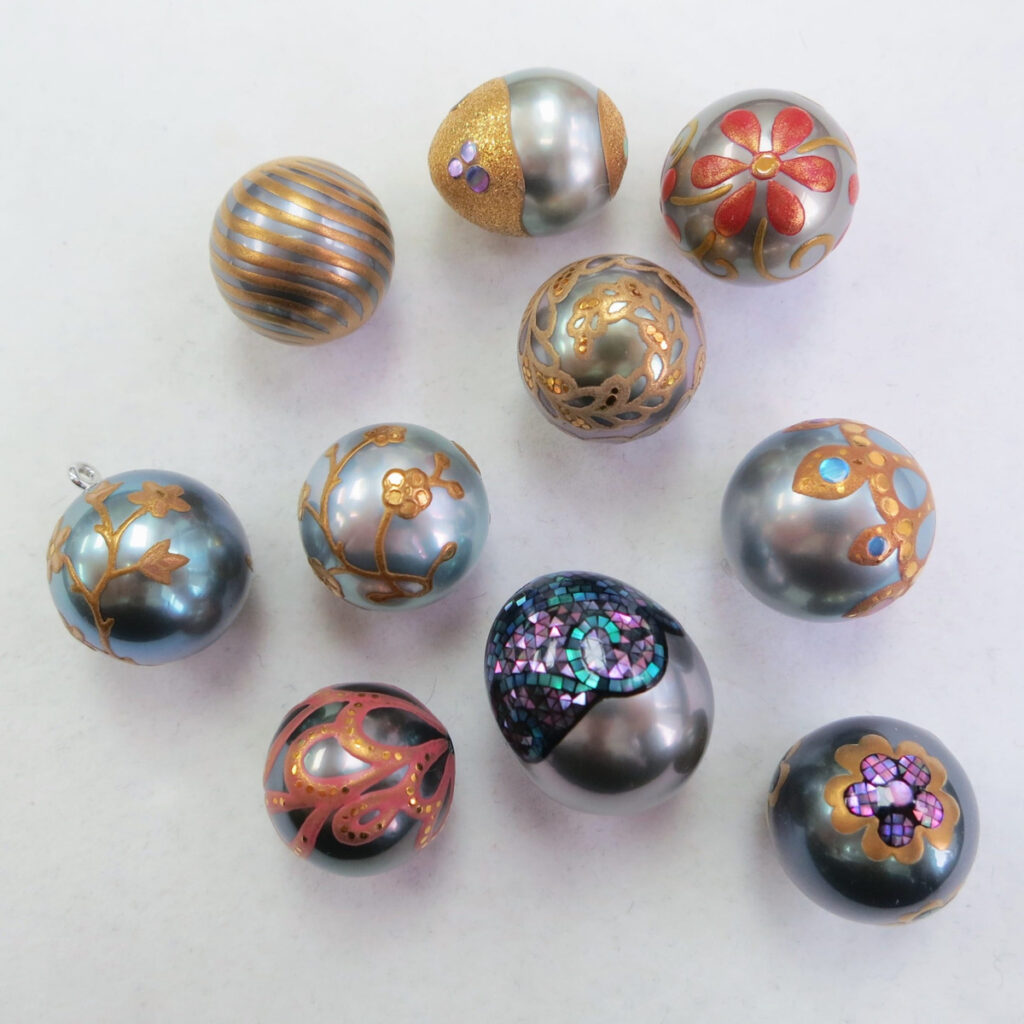Coral is a semi-precious stone and is of organic origin. It is formed by the oldest groups of multicellular organisms - coral polyps, which have been on the earth for about 550 million years. It is almost the first mineral used to create jewelry. The oldest items with coral inserts found by archaeologists date back to the XNUMXth century BC.
Currently, the level of pollution of the world's oceans threatens the existence of this amazing mineral, so its value is steadily increasing every year.
History of origin

The name of the stone has several versions. According to one of them, the Greek word "coralion" means "that which solidified in the hand." Coral was popular in Mesopotamia and Ancient Egypt, but it earned special respect in antiquity.
He often figured in ancient Greek mythology, and the supreme sea god Poseidon lived in a palace built from these stones.
According to another version, the Arabic word "goral" means "amulet stone". Muslims used black corals to create funeral wreaths, rosary beads, knife shafts, and cane handles. It was believed that the powerful spiritual powers of the stone were passed on to its owner.
In Russia, it was believed that coral was found in the brain of a dragon, therefore it was called a dragonite. It was considered a prophetic stone and was used to perform magical rites. Ominous properties were attributed to the dragonite; he was an instrument of revenge and corruption.
In the Middle Ages, Venice became the center of trade in these stones. Body jewelry, miniature sculptures were made from red corals, they were inlaid with weapons and the frames of church books. The pink-colored stone was worn by young girls as a symbol of modesty and purity.
Today, most of the coral comes to the world market from India, Japan, Hong Kong and Taiwan. The unusual stone is still interesting not only for collectors, but is also experiencing a new wave of popularity.
Origin and extraction
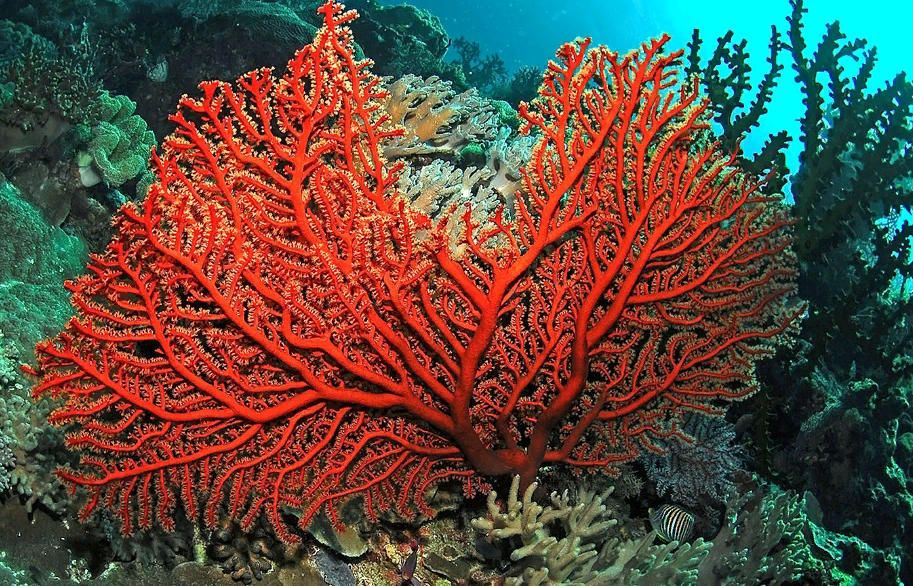
For a long time, corals were considered plants, and only in the XNUMXth century their animal origin was proven.
The natural origin of corals is the organic remains of marine invertebrates. These organisms, called coral polyps, are endowed with a lime skeleton, which is involved in the formation of reefs. The process of creating a reef takes centuries. The coral island has been growing for hundreds of centuries. This is due to the slow growth of the fossil - about 1 centimeter per year. Corals have age rings similar to those of a tree. Each ring is equivalent to 1 year. So, the age of some corals reaches hundreds of years.
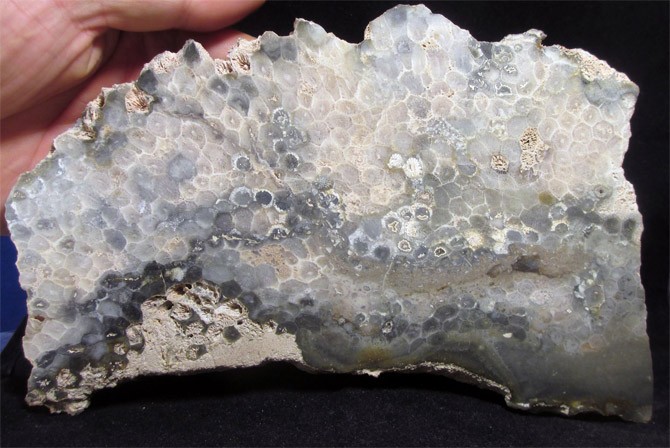
In jewelry, only lime frameworks are used - external skeletons left after the death of polyps. The most valuable part is the top of the coral tree.
On an industrial scale, corals are harvested using weighted coarse mesh nets that are dragged and moved along the seabed. The management of bottom nets and trawls is automated. However, such mining spoils and perishes most of the valuable material.
The profession of a coral diver is still in demand. Many of them die at an early age, faced with the dangers that hide underwater depths; others because of decompression sickness.
The best fishermen live on the island of Cozumel, located in the Caribbean off the coast of Mexico.
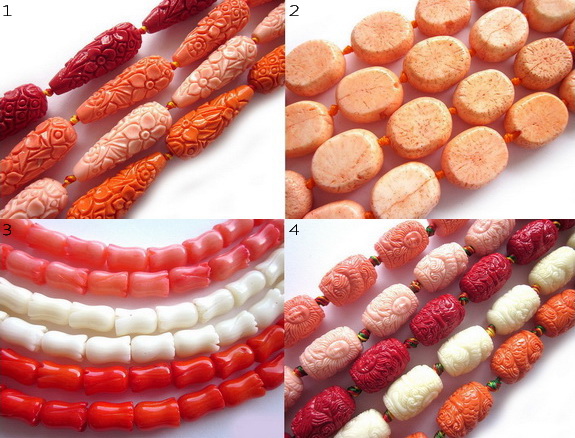
Polyps, the progenitors of corals, live only in warm waters, where the water temperature is never colder than 21 degrees. The largest habitats are the Pacific and Indian Oceans, the Red, Caribbean and Mediterranean Seas, as well as the Canary and Midway Islands, the coast of Taiwan and Japan, Tunisia and Algeria, Turkey and Australia, Yugoslavia and Sardinia.
The world's largest coral reef is located off the northeast coast of Australia. Its length is 2,2 kilometers. And off the Israeli coast there is the Eilat reef, 1,2 kilometers long.
Physicochemical characteristics
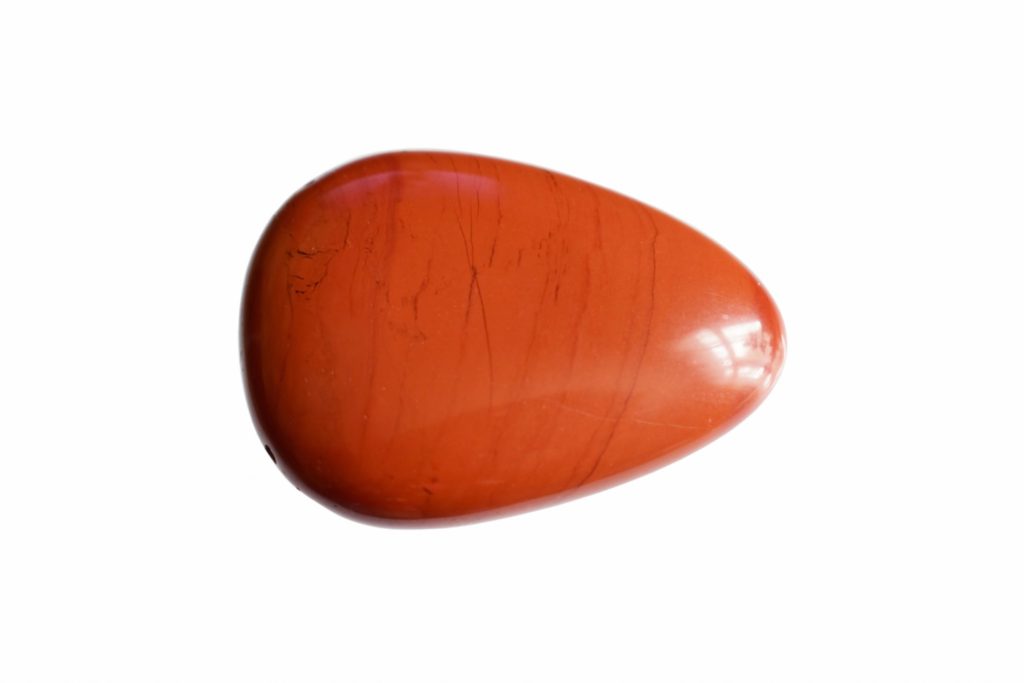
Coral is an opaque stone that shines through at the edges. The hardness of the mineral is low: for red varieties it is 3-4 according to Mohs, for black varieties it is two times lower. As a result, the coral is easily scratched with a knife.
In its raw form, the stone has a matte, even rough surface. It is rubbed with special wax polishes, giving a silky shine.
Natural corals can fade and fade when worn. But the most common reason for this is poor color.
Cheap white and even pink corals are dipped in hydrogen peroxide to give the popular red hue, and are also treated with chemical dyes.
| Formula | Ca (CO) 3 |
| Color | More than 350 colors, including shades of red, pink, orange, blue, white and black |
| Probable impurities | Manganese, iron, magnesium and calcite |
| Brilliance | Matt or absent before treatment, after glass or waxy |
| Hardness | Average 3,75, blacks are softer (from 1) |
| Transparency | Opaque |
| Strength | Soft and fragile |
| Kink | Splinter |
| Density | 2,6-2,7 g / cm3, black - 1,32-1,35 g / cm3 |
| Syngonia | Amorphous |
Colors and varieties
There are countless varieties of coral in nature; they differ in structure, porosity, shape and color. More than 350 color shades of coral are known to mankind.
The following types are most demanded in the jewelry market:
- "Bianco" is a white variety considered exclusively feminine.

- "Akkabar" is a black type, consisting entirely of organic matter, most often used in the manufacture of men's jewelry.

- Rosso and Rosso scuro are bright red and dark red corals, a favorite of jewelers and connoisseurs, from the coasts of Algeria and Italy.

- "Arkisuro carbonetto" - brown spongy specimens.
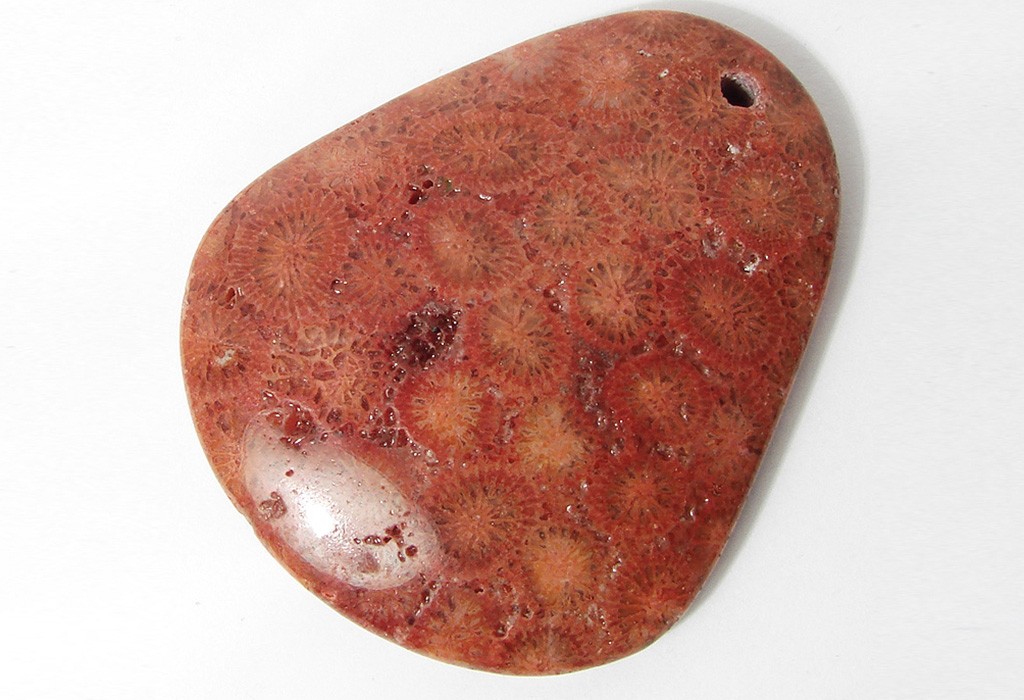
- "Pelle de Angelo" ("angel skin") - a pale pink look, the most romantic and delicate of all.
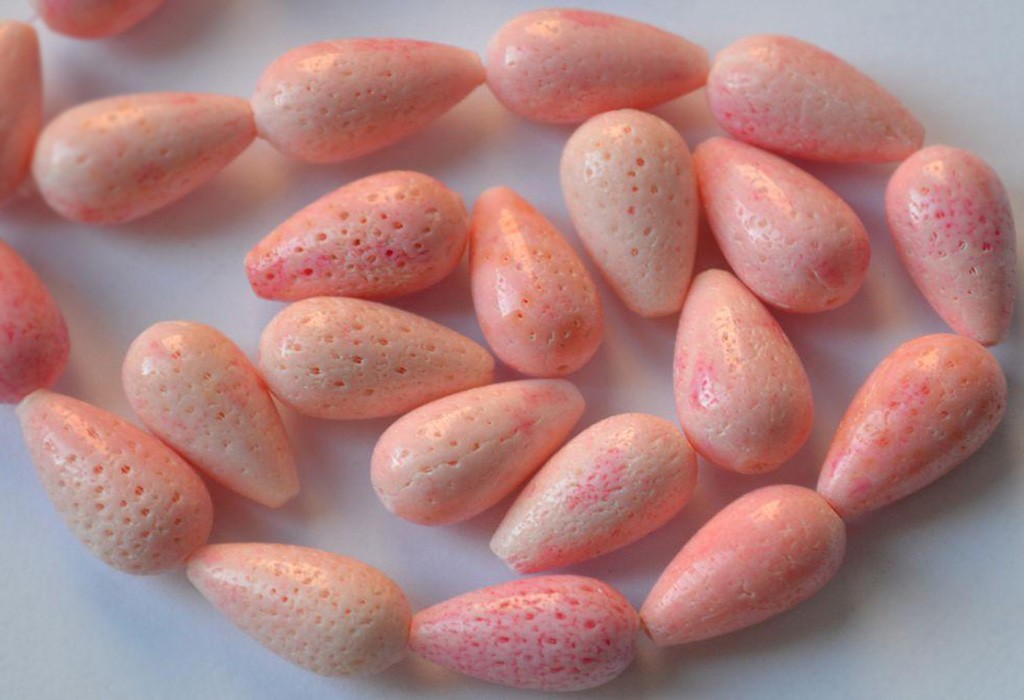
- Rose Palido is a pale pink variety.
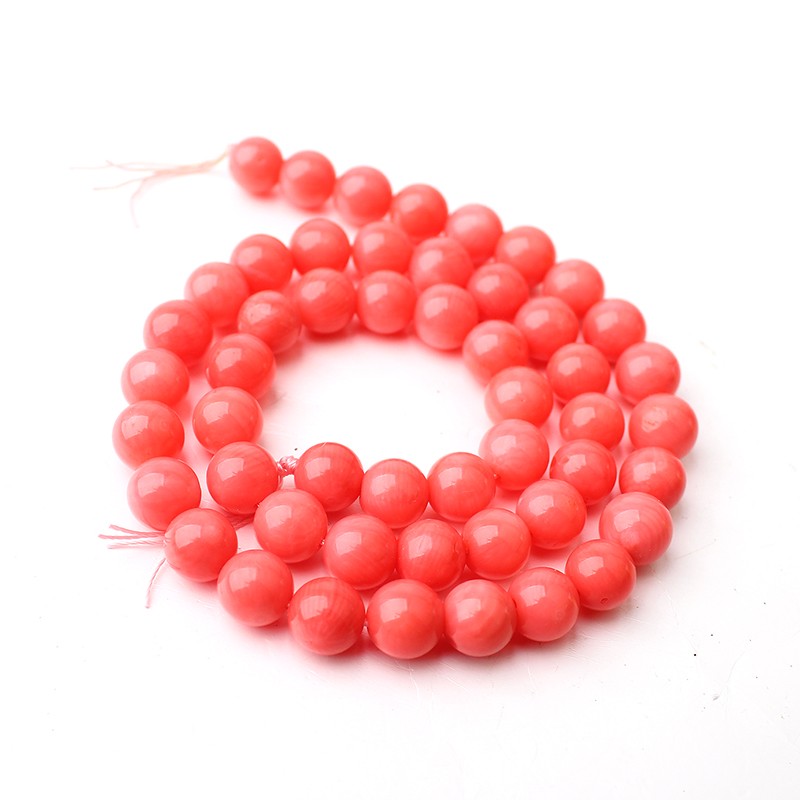
- "Rose Vivo" - examples of bright pink tones.
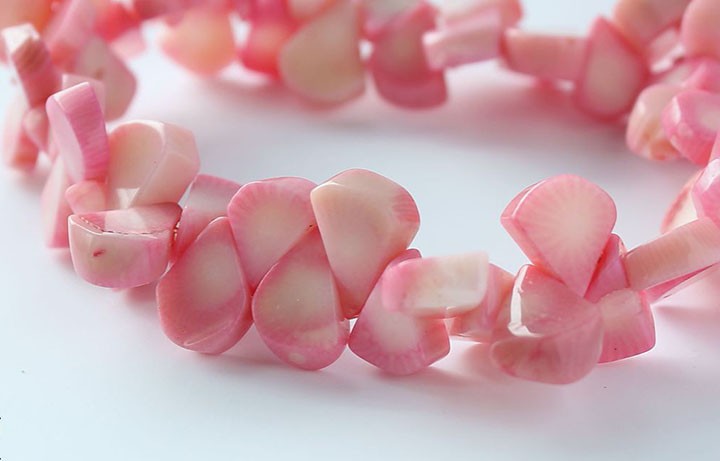
- "Secondo Colore" - salmon, pink-orange corals.
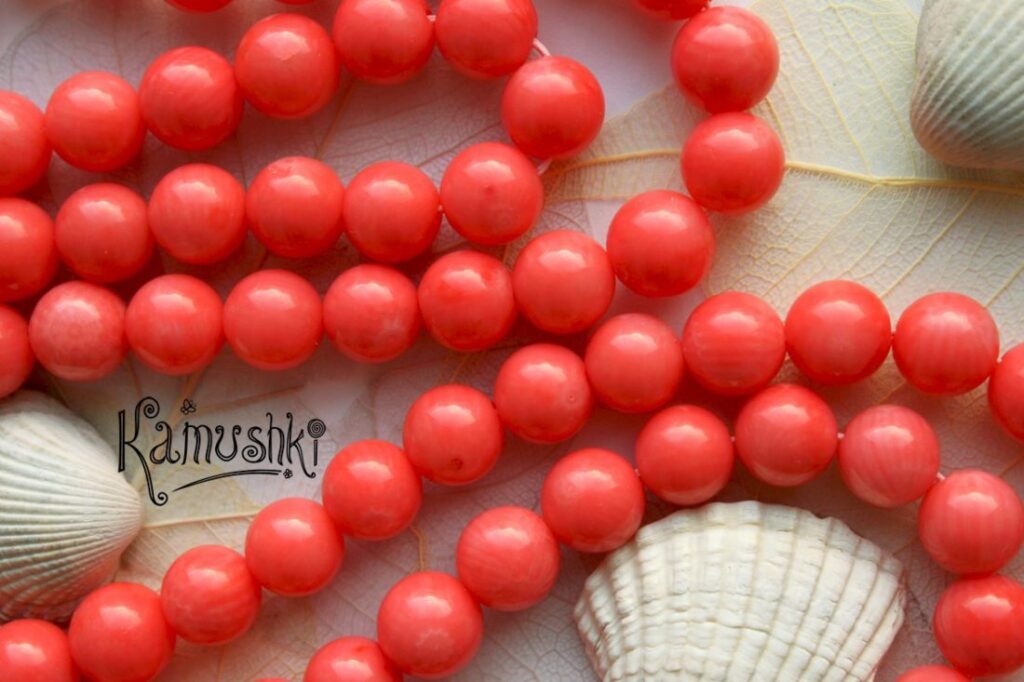
- A blue coral called "akori" is also very rare. It grows off the coast of Japan. Many stone carvers dream of making something from such a unique mineral at least once in their lives.
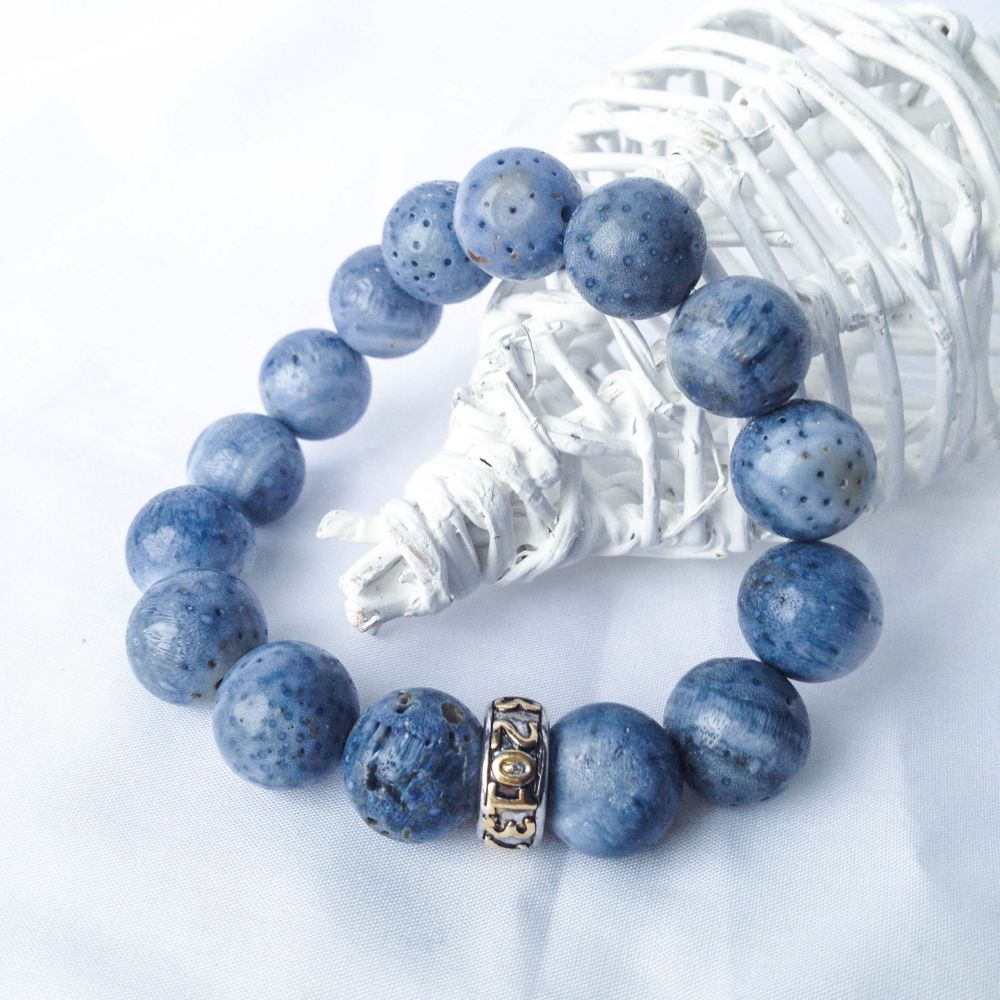
River mineral
Pisolite river coral stands apart. It is a sedimentary rock, a type of limestone. Formed on land as a result of millennia of cementing layers of fossilized shells, corals, and other marine organisms.
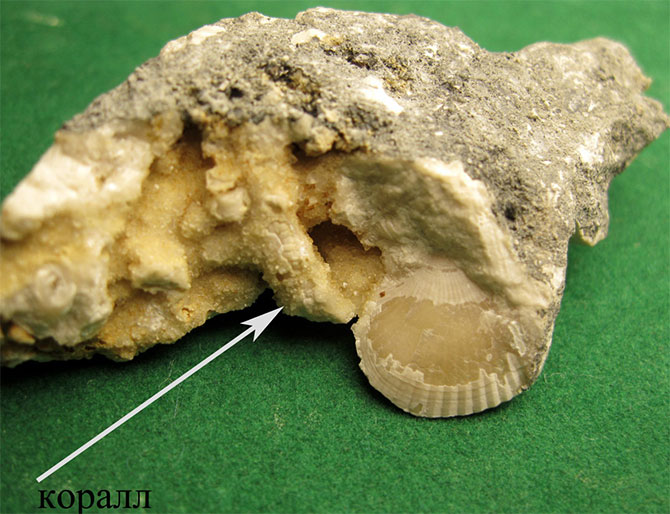
The mineral is in demand in construction as a decorative tile source. Suitable for the aquarium as an inexpensive analogue of sea coral.
Medicinal properties
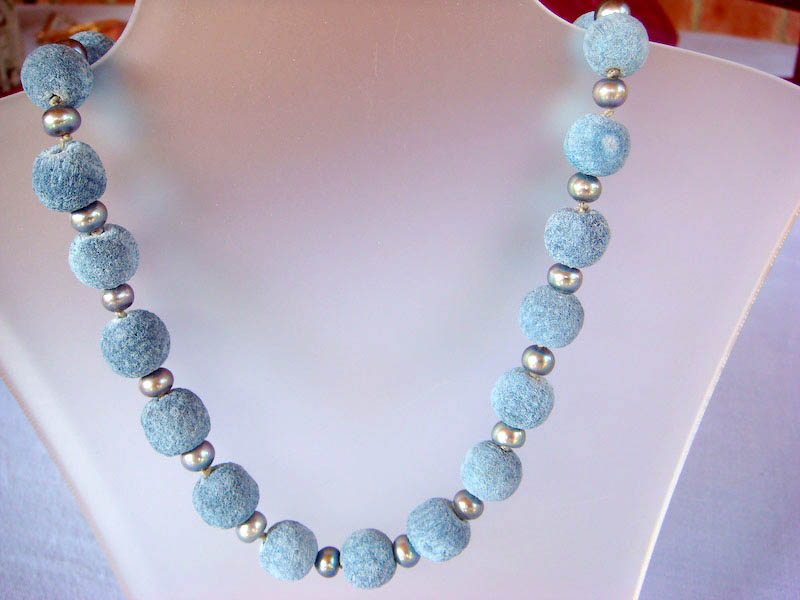
According to this theory, coral is capable of:
- To activate metabolism.
- Normalize the work of the cardiovascular system.
- Help with depression and neurosis.
- Heal abscesses and ulcers, including internal ones.
- Regulate the work of the pancreas.
In addition, the stone is a source of hormones, protoglandins. It is crushed into dust and used internally as a contraceptive.
Hindus believe that coral has an effect on the throat chakra, which is responsible for breathing, hearing and the skin. Ayurveda includes coral among the nine stones that symbolize the planets and govern all processes on earth.
The blood red stone is associated with Mars - the patron saint of vitality and passion.
It warms its owner, inspires him to courageous and courageous deeds.
In Portugal, they believe that red coral helps with headaches, in England - from sore throats, in Mexico - from fever. In the countries of Southeast Asia, coral powder is sold in pharmacies and is added to ointments, tinctures, and potions.
White coral is used in dental prosthetics in Japan to accelerate the healing of bone fractures. Its calcium structure is easily perceived and absorbed by the human body.
Coral is also popular in cosmetology. On its basis, an antioxidant peeling is made, which has an effective rejuvenating effect on the skin.
Magical properties and beliefs
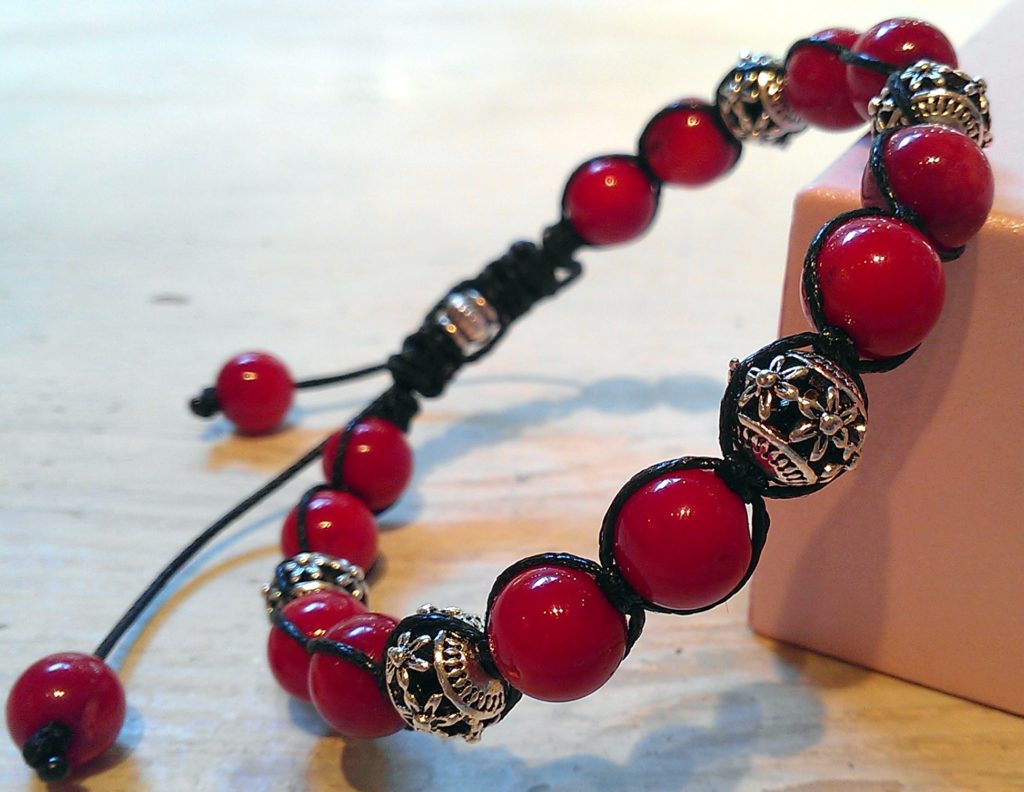
As a talisman, coral improves memory. It is considered a talisman against poison, witchcraft, shortness of breath, loss of appetite, develops intuition and logic.
The ideal time to wear is the new moon phase, and the most dangerous is the full moon period. Often wearing coral jewelry is not recommended, as it provokes moodiness and eccentricity.
Natural stone has long been considered the patron saint of travelers.
It protects from the dangers lurking in distant wanderings, helps to establish new connections, soothes bad weather, calms down storms and thunderstorms.
However, a coral sunset in the evening sky foreshadows just windy and restless weather.
Phallic coral amulets are very popular in Thailand.
They symbolize the lingam of the god Shiva, which protects the owner from evil spirits. Amulets are worn around the neck or on the belt, mantras are read over them, and ritual chants are arranged.
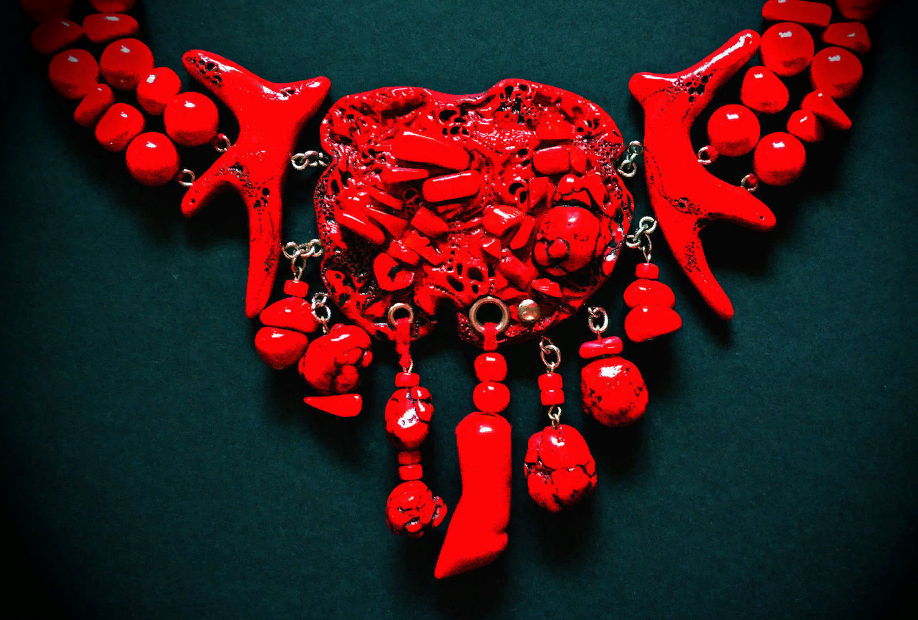
In South India, Kyrgyzstan and Tajikistan, women wear coral beads to bring peace and harmony to marriage and to cope with infertility.
In addition, the mineral acts as an indicator of the state of health - a sharp loss of color indicates a serious illness of its owner. If you dreamed about coral, this is a sign of recovery from a serious illness.
35 years of married life is called a coral wedding. On this anniversary, the husband and wife give each other jewelry with coral inserts, talismans and souvenirs.
Coral in astrology
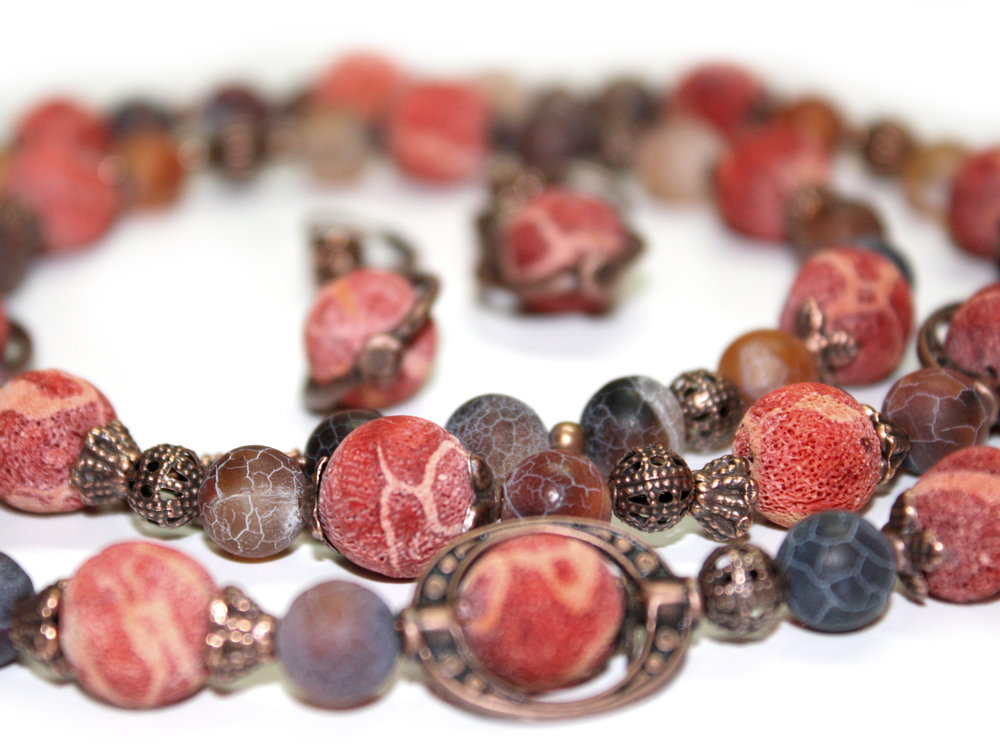
In astrology, it is generally accepted that red coral is a masculine stone, and white coral is a feminine one. It is not recommended to wear inappropriate color for representatives of the opposite sex: a woman who regularly puts on jewelry with red coral will acquire rough and masculine features, and vice versa.
Coral has a beneficial effect on people born per year Tigra or red Kota (1962, 1974, 1986, 1998). He brings them good luck, protects from anger and envy of strangers.
Coral is a gift from the sea, and it is not surprising that of all the signs, he singles out those that belong to the water element:
- Pisces they will receive from the stone self-confidence and decisiveness (men), softness and femininity (women). They will become more active and entrepreneurial, they will be able to quickly cope with everyday tasks, while leaving the strength for the implementation of more important plans.
- Cancer sea mineral will add vitality, make them more attractive to the opposite sex, help find love and start a family.
- Scorpions - owners of a complex character. Coral will help them come to terms with themselves, become calmer, wiser. He will teach scorpions to see the essence of things and their best side, make them more positive and optimistic.
- Devam, because they are too pragmatic, and they also have the opposite energy to the stone, which, with close contact, can lead to mental discord.
- Capricorns due to their excessive down-to-earthness and stubbornness, they will not be able to recognize the positive influence of the stone and will hinder it in every possible way due to their unpreparedness for changes in life.
Only Taurus, as a representative of earth signs, it is not contraindicated to wear coral jewelry, which will bring him good luck and help improve his health.
For the representatives of the remaining two elements - air and fire - the sea mineral will also send some benefits, although to a lesser extent than watermarks:
- Aries will receive patience as a gift. They will be able to more easily endure the difficulties that have fallen to their lot, as well as the expectation of something. Another stone will become a talisman for them from human envy and anger.
- Lions - the mineral has an ambiguous effect on them. On the one hand, representatives of this sign will improve their health and avoid some dangerous situations, on the other, they will become more lazy and slow.
- archers, whose fire is manifested in literally everything, will learn to control emotions, contain outbreaks, think before saying or doing something.
- Scales will open their souls to people who have long deserved and paid for the entrance to it with many years of dedication. Representatives of this zodiac will become wiser and more careful, they will forget about their "superpowers" to make either hasty decisions or not make them at all. The stone will help them find balance and relieve them of eternal fluctuations from one extreme to another.
- Vodoleevthose who make friends with coral will find stability in life - a constant well-paid job, a strong family, peace, tranquility and prosperity (just don't get bored, because Aquarius are adventurers by nature).
- Gemini the stone is necessary as a reliable amulet against dark magic. He will perfectly cope with this task - he will protect the Gemini themselves, and their loved ones, and their home.
| Zodiac sign | Compatibility ("+++" - perfect, "++" - good, "+" - wearable, "-" - not recommended) |
| Aries | + |
| Taurus | + |
| Gemini | + |
| Cancer | ++ |
| a lion | +/- |
| Virgo | — |
| Scales | + |
| Scorpio | ++ |
| Sagittarius | + |
| Capricorn | — |
| Aquarius | + |
| Pisces | ++ |
At the same time, talisman stones bring good luck to their owner only if they are obtained in an honest way.
Coral jewelry
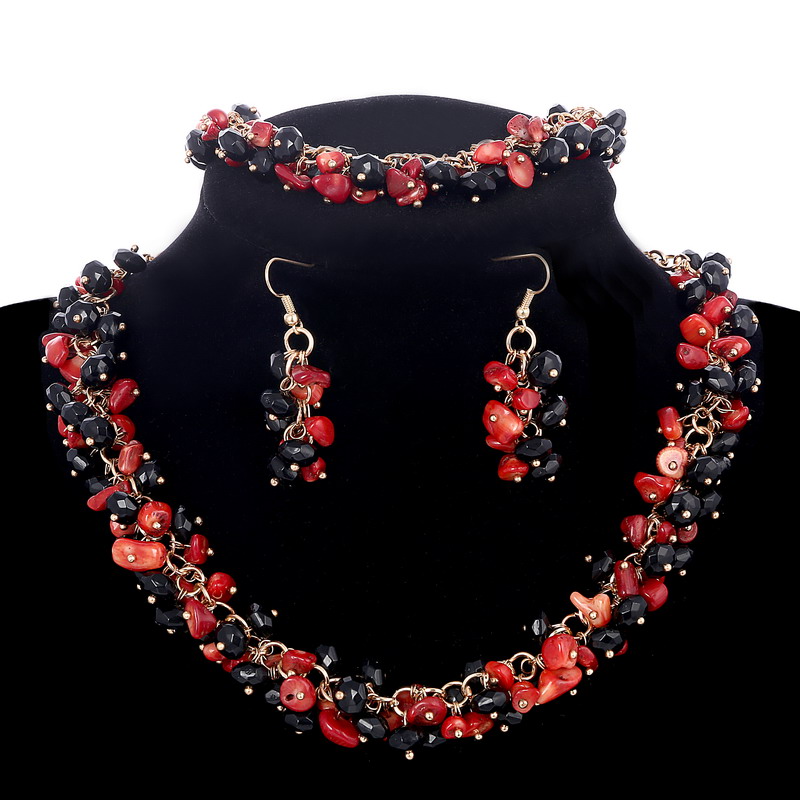
The most traditional coral decoration is beads. They help to give the image bright and juicy folklore notes. But the richness of the natural palette allows the use of the mineral in a wide variety of decorations.
Soft pink coral is suitable for a young girl's ring, bright orange in gold setting will adorn a mature lady, rich black will ennoble a man's signet or bracelet.
Untreated coral twigs are also used as decorations. They are called cornetti and are worn around the neck as a pendant. Such an unusual product is successfully combined with a romantic image.
Coral products price
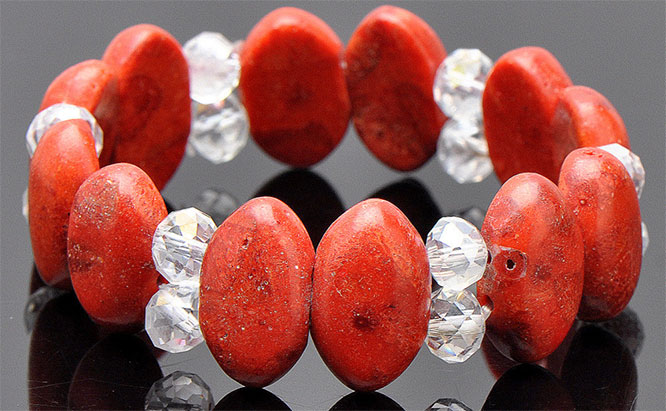
The cost of products depends on the type of mineral used, the rarity of its color, as well as the metal of the frame, if any. For example:
- A five-strand pink coral bead can be purchased for $ 180, a single-strand red coral necklace for $ 87.
- A set of earrings + pendant (one red bead per piece of silver fittings) - for $ 32.
- A set (short beads, bracelet, earrings) made of stones of different shapes with geometrically regular outlines - for $ 77.
- A set (short beads + earrings) made of rare blue coral - for $ 130.
- Coral bracelet with fancy baroque pearls - $ 148.
- Silver rings and earrings with large cherry inserts - for $ 89.
- Silver with gold plated earrings with two small coral beads - for $ 47.
- A rare gold brooch-pendant with a white coral insert made in the form of a cameo - for $ 487.
How to wear coral
Coral jewelry is a trend of many seasons. This gem is not subject to age restrictions, so it is suitable for women of all ages. It is worth remembering that such products are best worn on a new moon, and put aside on the full moon.
The bright, flashy colors of the stone are ideally combined with blondes. For redheads, white is suitable, and for brunettes, white and pink shades. Young girls are advised to opt for more gentle colors. But dark, rich corals are an attribute of mature ladies.
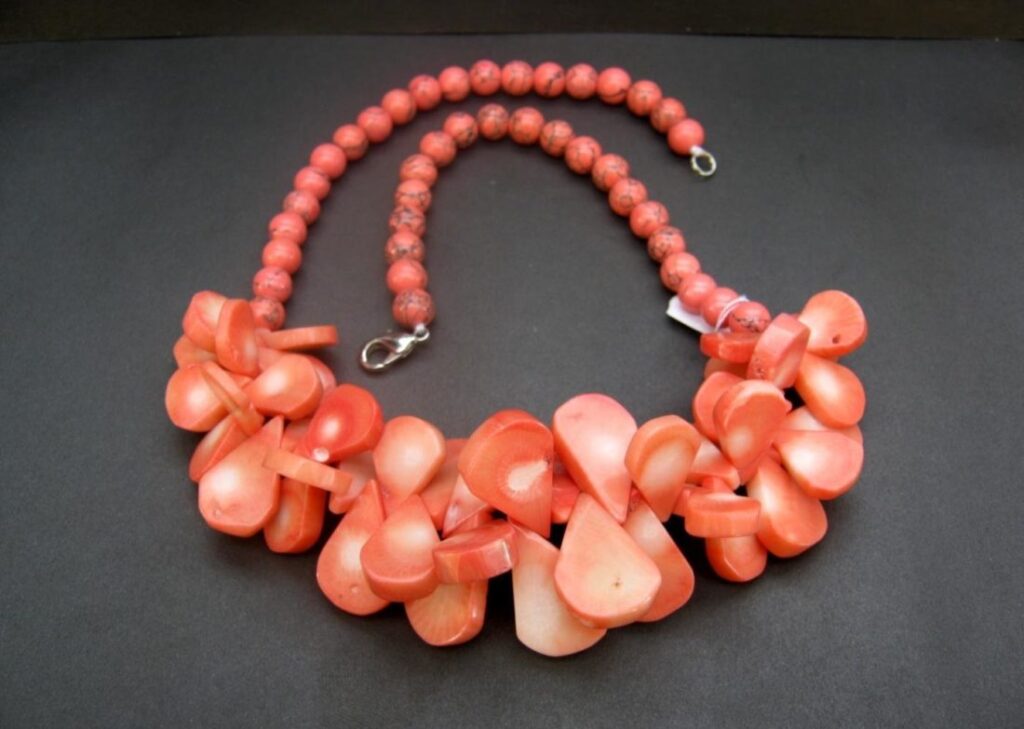
When choosing an accessory such as beads or necklaces, the main thing is not to overdo it with additions. By itself, such a decoration is quite bright and independent. Tandem with neat string earrings or with a large stone is allowed. Other details of the image can also be combined in color with coral - bag, belt, shoes.
Stone care
The biggest difficulty, with which the owner of the coral can collide in the process of socks and go after them - this is the softness of a mineral. It is easy to scratch or break, therefore, it should be protected from any unwanted actions of a physical character - do not poop, do not let go, etc.
It is best to keep the corals in a separate case, wrapped in a brass paper. In polyethylene, the "gift of the sea" will quickly come to trouble, since the mineral must "breathe" all the time.
Any chemistry is ruinous for the coral, therefore, you should not wear decorations with it during cleaning, washing and other household chores, as well as in the process of painting and painting. Negatively, they are driven by excessive moisture, as well as lack of moisture, and even prolonged stay under bright sunny rays.
They clean the corals only with a soft damp cloth, and then cure them with the same soft, but already dry cloth.
How to identify a fake
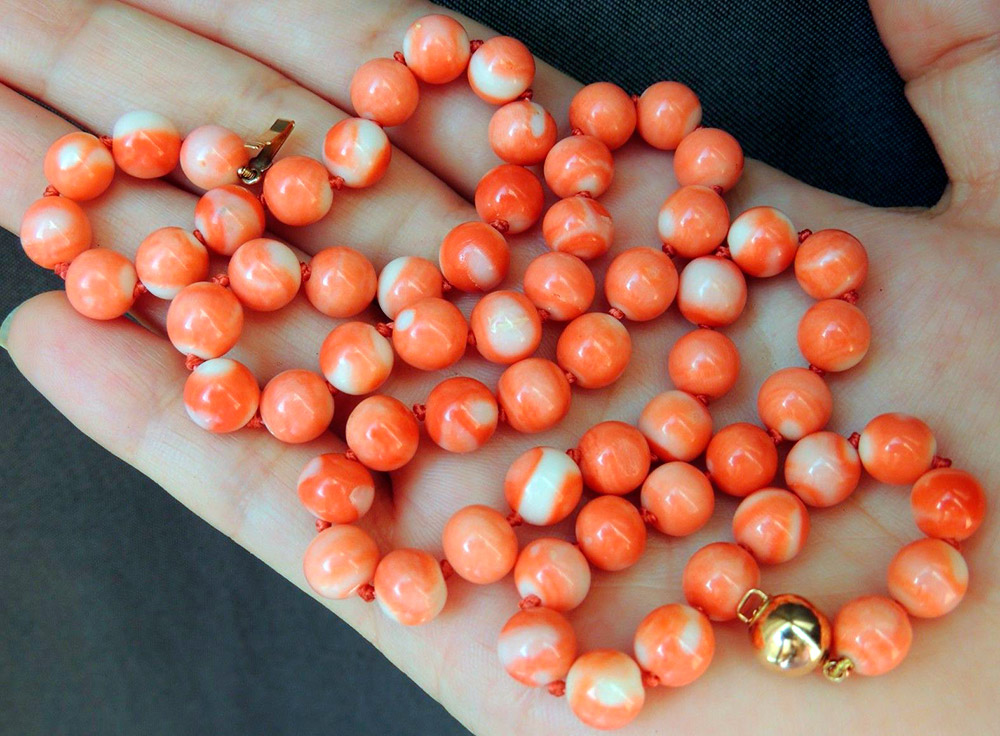
The main criterion by which you can determine whether the coral is natural in front of you is its price. It shouldn't be too low.
Several substitutes for natural stone are currently common:
- Synthetic counterpart, or Gilson's coral. It was first obtained in 1972 in a Swiss laboratory from calcite powder. In terms of its physical and chemical properties, Gilson's coral is almost identical to the stone mined from the ocean depths, but it costs much less. It can be distinguished from a natural mineral by the absence of a characteristic mesh pattern on the surface.
- Quartzite. It is a cheap stone that looks like coral on the outside. It is easy to recognize by its temperature - it always stays cold.

- Coral imitation. They are created from pressed coral shavings with the addition of dyes and plastics. There are also very cheap counterfeits, completely consisting of glass, plastic or polymers. It is easy to recognize them by their uniform color, which is very rare in nature. You can grind a piece of stone and add acetic acid - the natural calcium material will enter into a chemical reaction, as a result of which bubbles form on the surface.
Like many seafood, natural coral becomes brighter after a long stay in the water: this does not happen with imitations and fakes. Conversely, if a poor quality colored stone was purchased, then the water can change color.
Compatible with other stones

Precious stones, like the signs of the zodiac, belong to one or another natural element. Some belong to one of them, some to two, and such an amazing mineral as coral is under the auspices of three at once. He is subject to the elements of Water, Fire and Earth. This allows it to be combined with other types of precious and semi-precious stones.
Suitable pairs for coral are:
- turquoise;
- amethyst;
- onyx;
- lapis lazuli;
- sapphire;
- pearl.
Also a good addition is agate... However, even these stones should be combined with each other according to a certain principle. Color is of particular importance here. White and light pink corals can be combined with minerals of any shade, while red only with transparent stones.
Products in which the central element has a dark color is best diluted with bright contrasting shades.
The most incompatible minerals, according to both astrologers and jewelers, are:
- beryl;
- jasper;
- malachite;
- sardonyx.
Interesting Facts
- The most famous and unconventional coral product is a whole castle, invented by the amateur sculptor Edward Lidskalnin. Its total weight is 1100 tons, and it includes the castle of the following components: Walls. The tower is 243 tons in weight. Table in the shape of a heart. Solar clock. Map of Flopids. Planets Mapc and Satyrn, as well as a month in the form of a month, we will focus on a polar star.

Coral castle - Coral is popular and revered in the United States. So, the black mineral is the symbol of Hawaii, and the agate is the state of Florida. Here is the city of Cape Coral, which has the largest number of shipping canals in the world.
- After hitting land coral begins to age and slowly die. After 200 years, the former marine life can completely dry out and turn into dust.
- Great Barrier Reef - not only the largest coral formation, but also the largest natural object on Earth, formed by living organisms. It is included in the UNESCO World Heritage List. In 2013, a scandal erupted around the reef: during an American-Australian military exercise, four bombs were mistakenly dropped on it. Fortunately, the Great Barrier Reef was not damaged.
